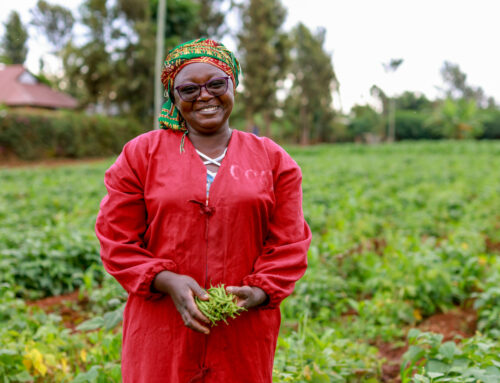How can food systems create more rural jobs?
As stated by ILO, even though global unemployment has stabilized, the global economy is still not creating enough jobs. There is an immense global challenge to provide the jobs needed to end poverty, increase work quality and improve shared prosperity. Over the next 15 years, there will be about 1.6 billion people in low- and middle-income countries reaching working age. Unemployment and low-quality employment are more drastic in the rural areas of developing countries, especially for women and youth.
The World Bank predicts that by 2030, some of the rural poor will migrate to urban areas, but most will not, and the rural population in less-developed regions may even increase slightly. Currently, 80% of the poor live in rural areas and most rely on agriculture for their livelihood. Average incomes of the poor will need to increase by about 60% in most developing countries to lift them above the poverty line.
Based on this situation, in order to reduce rural poverty and migration, growth must come from activities based in rural areas, in which the food system plays a key role. The World Bank highlights the importance of investing in the food system, as it is already the largest employer in many countries, especially taking into account that food demand will increase around 25% in developing countries, and up to 55% in Sub-Saharan Africa, during the next 15 years.
The main challenge of farm labor is seasonality. It is argued that in terms of productivity, on a per-hour-worked basis, this sector remains competitive in comparison with others. But agriculture seasonality, which implies substantially fewer hours on an annual basis than other sectors, is the cause of impoverishment in farming communities. Farming gains are also highly affected by issues such as the lack of infrastructure, such as transport routes, and electricity, that affect output prices.
The food system is comprised of more than just primary agricultural production. It includes food storage, processing, distribution, transport, associated logistics, retailing, preparation, and other services that involve many enterprises and a relatively large share of jobs in the manufacturing and service industries.
The World Bank report Future of Food: shaping the food system to deliver jobs lists key areas for increasing jobs in food systems, such as:
High-Value Agriculture
As food demand will increase around 25% in developing countries, and up to 55% in Sub-Saharan Africa, during the next 15 years, it will bring important changes in food consumption trends, stimulated by the growth in per-capita incomes. It is predicted that a rise in food expenditure, especially in the consumption of fresh produce, processed and convenience foods, will grow faster than cereal food demand. For this reason, it is vital to understand the new trends and promote high-value agriculture in response to shifting nutrition demands.
Value-Addition Jobs and Technology
Food system jobs, with a focus on value addition, such as food processing, transport, logistics, and retailing, are often higher paying than standard farm jobs. New technologies in these fields are shaping how food value chains are organized, offering new opportunities for income gains, entrepreneurship and higher skilled jobs.For example, rural-based food processing and value addition: On-farm storage and warehousing can help regulate seasonality in producer prices and food consumption. Cold storage can reduce the perishability of higher value crops for market, thus helping to increase the returns on labor, and also promote farm diversification to reduce the seasonality of jobs and incomes.
Decentralization
Increased demand for food safety, traceability and the need to reduce negative effects on the environment, especially of long-distance food transportation, is propelling the decentralization of food processing, packaging, and marketing functions, that could bring new employment to rural areas, creating local value-addition. The World Bank also recommends creating incentives for firms in the food system to relocate to secondary towns or rural areas.
Entrepreneurship
Programs that combine interventions, such as access to markets, finance, mentoring, coaching, and training are needed to boost non-traditional labor activities and can help to improve the quality of jobs in food value chains. Participation of the private sector, such as food companies, in these fields can help to improve performance in supply chains.
Inclusion
Women & youth are the most vulnerable and excluded segments of the labor market. Targeting them for non-traditional jobs such as processing and ICT can assure equality and future social stability.
Source: World Bank. Future of food: shaping the food system to deliver Jobs. 2017. P9



